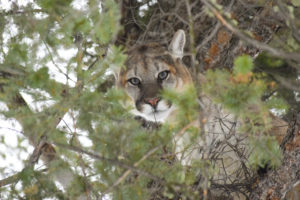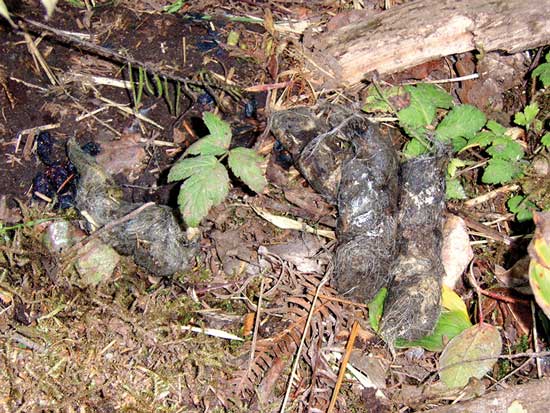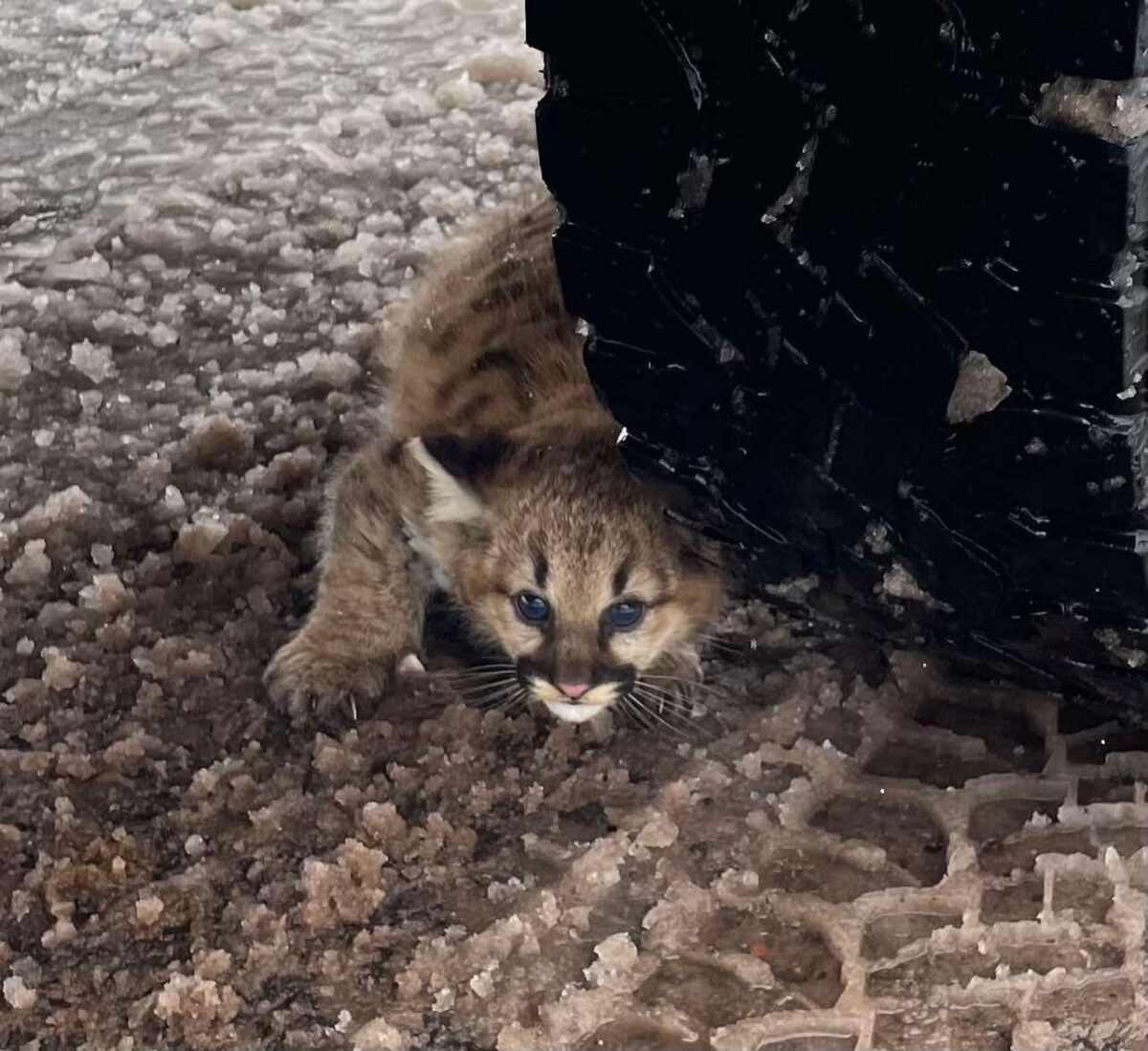 With an observant eye and some precautions, you can coexist with the pumas around your property while keeping yourself, your livestock, and your pets safe.
With an observant eye and some precautions, you can coexist with the pumas around your property while keeping yourself, your livestock, and your pets safe.
By: Kristina Seleshanko
You can read the original article published on Mother Earth News here.
My children were catching frogs in the pond and I was snacking on salmonberries when, out of the blue, our dog started to growl. The hairs on the back of his neck stood up, and he stared at something I couldn’t see. He sniffed the air and growled again, and then he did something he’d never done before and hasn’t done since: He began to pull on his leash, dragging me back toward our house, barking and growling the entire time. I decided that the dog knew something we didn’t; I rounded up the kids, and back to the house we went.
After my husband heard the story, he walked back to the scene of our dog’s strange behavior to see if he could find any clues about what upset him. What he discovered gave him chills: cougar claw marks on a tree, as well as a cougar den tucked away in a steep bank. We already knew cougars lived in the area, but now, we realized they were awfully close to our home and livestock.
There are more than 80 different names for cougar, including “mountain lion,” “puma,” “panther,” and “catamount.” Whatever you call them, cougars are one of the largest felines in North America, with adults weighing from about 60 to 200 pounds. (The largest ever recorded was a whopping 276 pounds!) They can stand approximately 2 to 3 feet tall at the shoulders and measure 8 feet long. They’re the ultimate predators, hunting in territories that are generally 50 to 200 square miles. But how dangerous are these big cats to humans? And how can we protect our livestock from them?
Cougar Signs
Experts such as Debra Chase, CEO of the Mountain Lion Foundation, say that cougars are mostly afraid of humans and don’t see us as potential prey. Occasionally, though, humans fool them. Quick movements, such as running or bicycling, which make humans resemble prey, sometimes lead to cougar attacks. Children, because of their size and swiftness, may be more vulnerable. Still, cougar attacks on humans are uncommon; livestock and pets are more likely to become cougar prey. Even in the suburbs, it’s not unheard of (though it’s rare) for cougars to kill, say, chickens or small dogs.
A sign of a cougar on your property can include paw prints. According to Kevin Hansen’s book Cougar: The American Lion, cougar tracks are usually cleanly marked, with the cat’s weight evenly distributed. Mature cougar tracks are 3 to 4 inches in diameter, with no claw marks. The big cat’s paw pads leave behind an “M” shape with three lobes at the back of the heel. When walking, a cougar’s hind foot steps into its fore track, and its toes slant to the left or right. In contrast, canine tracks have just two lobes at the heel; the soil is typically shoved into a ridge at the top edge of the heel; the track sports claw marks; and the tracks don’t slant to the left or right.
You might also see cougar scat, which is segmented with rounded ends that sometimes, but not always, have a “tail.” Each scat segment from a mature cat measures about 1 to 1½ inches in diameter. You’ll typically see bone and fur in the scat.

Cougar claw raking, such as we saw on our property, is 4 to 8 feet above the ground and runs down the tree several feet. Just remember that bears claw-rake too; they tend to remove more bark from trees, and their claws are usually larger. Deer, elk, and moose can leave marks on trees as well.
In addition, you may hear cougars — but don’t always expect the scream heard in Hollywood movies. Cougars can, indeed, sound like someone screaming, but they make many other noises that are much more subtle. In fact, people often confuse their vocalizations with birds’. Listening to verified cougar sounds online may help you distinguish cougar noises from more mundane wildlife sounds.
Finally, an animal carcass that’s partially eaten and then covered with dirt, brush, or leaves is a sign that a cougar has made a kill and will return to finish its meal.
Deterring Cougars from the Homestead
While humans will never truly control wild animals, we can take a few actions to help discourage cougars from roaming too near.
-
- Keep outdoor trash cans firmly sealed. If possible, store them in an outbuilding. Regularly wash them, inside and out, with soap and water.
- Don’t store food for pets or livestock outside. Keep it in firmly sealed cans, preferably in an outbuilding.
- Don’t feed deer, birds, or other wildlife.
- If you have poultry, gather their eggs every day.
- Don’t toss cooking grease outside. Clean up grills and barbecues, burning off the grease. Ideally, store grills and barbecues in outbuildings.
- Look around your property for places where cougars might seek rest and concealment. For example, if your porch or deck isn’t sealed off underneath, cougars may use it as cover. For better security, close those openings.
- Keep grass and brush mowed down so cougars don’t use them as cover for ambushing prey.
- Keep small livestock, such as rabbits or chickens, in enclosures that have tops. Cougars can jump 18 feet high — or jump down into enclosures from trees — so fences without tops aren’t adequate protection.
- Understand that livestock and pets are most vulnerable to cougar attacks when deer are migrating.
- If you live where cougars do, consider scheduling livestock births for autumn, when cougars and other predators are less pressed to feed their young. Baby animals are more at risk; additionally, the blood that comes with giving birth can attract cougars to pastures. It’s also helpful to keep birthing mothers in an enclosed structure. Vulnerable, injured animals should also be kept inside.
- Use flerds — groups of sheep and cattle raised together — to help prevent cougar attacks. When predators appear, cattle tend to encircle sheep; this discourages cougars.
- Ideally, locate pastures away from rivers or other bodies of water where cougars may drink.
- Keep pastures away from deer trails.
- Consider keeping livestock guardian donkeys or dogs.
- Never chain pets or livestock outside. This makes them easy pickings for hungry cougars.
- Keep pets indoors from dusk until dawn. Don’t let livestock out of their enclosures until after sunrise, and make sure they’re locked up by dusk.
- Consider adding motion detection lights to your property.
- Wear bright, contrasting clothing when working outside, hiking, camping, etc. To a cougar, midtone colors may make you look more like a deer.
- If you must bend down or crouch in cougar country, first make your presence as a human known by creating a lot of vocal noise. (Bending down makes the back of your neck vulnerable and your body prey-like.)
- If you run across a dead animal, especially if it’s partially eaten and then covered with brush or dirt, move away. Cougars return to their kills.
- Keep children close.
- When on hikes or camping, take a large dog; some studies show they can prevent predation. To help protect your dog, however, consider putting it on a leash.
- When in cougar country, wear a whistle. Loud noises can scare cougars away.
Cougar Encounters
What should you do if you encounter a cougar face-to-face? First and foremost, don’t run or make rapid movements; these actions make you seem like prey. Besides, cougars can run up to 45 miles per hour, so there’s no hope of outrunning a big cat.
Instead, experts advise that you first pick up small children (while avoiding bending over or crouching down as much as possible) or gather older children close to you. Face the cougar head-on, so it can easily see that your eyes are at the front of your face — not on the sides of your face, as prey animals’ are. Try to look bigger than you are by spreading out your arms. Make lots of noise. Don’t corner the cat. Don’t play dead.
Back away from the cougar slowly, continually making loud noises. Ideally, the cougar will run away from you. If it doesn’t, or if it seems to be moving closer to you, throw whatever you can at it, without bending down or crouching over. In the unlikely event that the cougar attacks, fight back with everything you have. Protect your neck and throat and make it clear that you’re not prey. “People have used rocks, jackets, garden tools, tree branches, walking sticks, fanny packs, and even bare hands to turn away mountain lions,” Chase says.
What should you do if a cougar attacks your livestock? If you don’t see the attack yourself but discover a body, first examine it for signs of a cougar attack. You’d see:
-
- Puncture wounds at the back of the head and neck.
- The stomach eaten first.
- The area around the stomach plucked clean of fur or hair.
- The carcass covered with debris, indicating that the cougar will return to it. (But if the cougar was interrupted, it may not have had time to cover up its kill.)
If the animal’s ears are chewed or removed, this indicates the attacking predator was not a cougar but possibly a domestic dog.
If you suspect a cougar attacked your animals, Chase advises that you don’t disturb the area where the attack occurred. Call your state’s fish and game department instead. According to records kept by the California Department of Fish and Wildlife, goats and sheep are the livestock most likely to be attacked by cougars.
Interestingly, according to a study by John Laundré and Christopher Papouchis, trapping and removing cougars to a different location, or shooting cougars that are killing livestock or pets, may cause more problems than it solves. When one cougar is removed from its territory, several others may try to take its place. But even in California, which Chase describes as “the model for other states with some of the strongest protections for mountain lions in the nation,” cougars can be legally killed if livestock owners show they’ve taken precautions to protect their domestic animals. Consult your state’s wildlife department to learn which laws apply in your area.
Since our dog first alerted us to cougars on our homestead, we’ve heard cougar noises nearby and have found suspicious deer bones on our property. But knowing the best ways to deter cougars from our livestock and family has eased our minds. As has the realization that, as Chase puts it, “[There are] about 125 human-lion conflicts a year in North America.” That might sound like a lot until you consider that the Centers for Disease Control and Prevention reports 4.7 million dog bites and about 8,000 snake bites per year in the U.S. alone.
Although cougars are powerful predators, humans needn’t panic at the thought of them. Healthy respect and wisdom about their habits go further than fear when it comes to protecting yourself and your domestic animals.



 Facebook
Facebook Twitter
Twitter Send Email
Send Email


